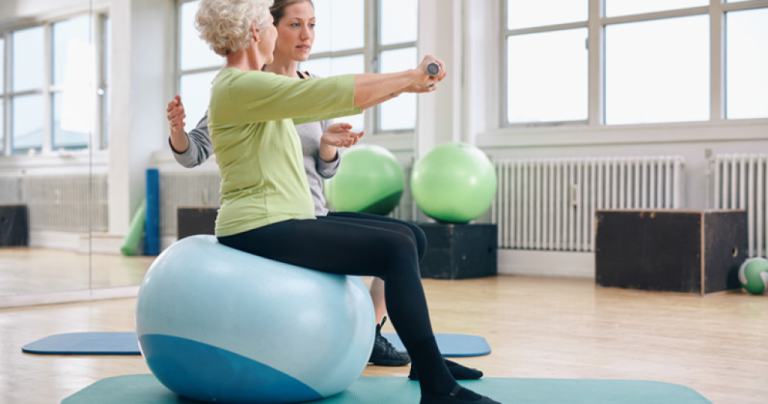
Parkinson’s Disease & Physical Therapy
Parkinson’s disease is a chronic progressive movement disorder. Meaning that the longer a person has this condition the harder it becomes for them to move. This disease works by breaking down a dopamine pathway in the brain. As a result, dopamine is not delivered to the Substantia Nigra in the Basal Ganglia. The Basal Ganglia are responsible for clean and coordinated movement. The continued breakdown of this pathway is responsible for the poor control of movement seen.
Doctors do not have one specific test that can diagnose a Parkinson’s patient. Instead, they look at a patient’s individual and family medical history, as well as, movement tests. There are 4 main symptoms to look for when diagnosing a patient: Tremors (involuntary shaking of an extremity), rigidity (stiffness), brady/akinesia (slow movement), and postural instability. Generally, they see onset symptoms occur on one side of the body, and it progresses from there.
The cause for Parkinson’s is still unknown. Currently, it is believed there are both genetic and environmental factors that cause Parkinson’s. Researchers have found that individuals with Parkinson’s have a relative also diagnosed in about 15-25% of cases. People with a direct relative (such as a parent or a brother) have a higher risk of Parkinson’s. Scientists have also linked certain toxins with Parkinson’s such as well water, manganese, and pesticides. However, it is important to note that simple exposure to these do not cause Parkinson’s. It would require prolonged exposure.
The big question people have is about treatment for Parkinson’s. Currently, there is no cure for the disease, but doctors can prescribe medications to control and regulate dopamine in the brain. Also, with physical therapy, people with Parkinson’s can live full and successful lives with little interference from their condition. Studies have shown that physical therapy can help to improve mobility, activities of daily living and the quality of life in patients with Parkinson’s. Patients who have mild to moderate levels of Parkinson’s can benefit greatly from aerobic activity. It is suggested that low to moderate-intensity aerobic exercises such as treadmill, Tai-Chi, and dancing have shown improvement with gait and balance.
A physical therapist will work with a Parkinson’s patient to identify their impairments, educate them on their condition, and work with them to help improve their condition. There are multiple studies that show physical therapy intervention can help improve the mobility and functional activity of individuals with Parkinson’s. With goal-oriented physical therapy, patients can live a longer, more independent life.
The medical information contained herein is provided as an information resource only, and does not substitute professional medical advice or consultation with healthcare professionals. This information is not intended to be patient education, does not create any patient-provider relationship, and should not be used as a substitute for professional diagnosis, treatment or medical advice. Please consult with your healthcare provider before making any healthcare decisions or for guidance about a specific medical condition. If you think you have a medical emergency, call your doctor or 911 immediately. IvyRehab Network, Inc. disclaims any and all responsibility, and shall have no liability, for any damages, loss, injury or liability whatsoever suffered as a result of your reliance on the information contained herein.